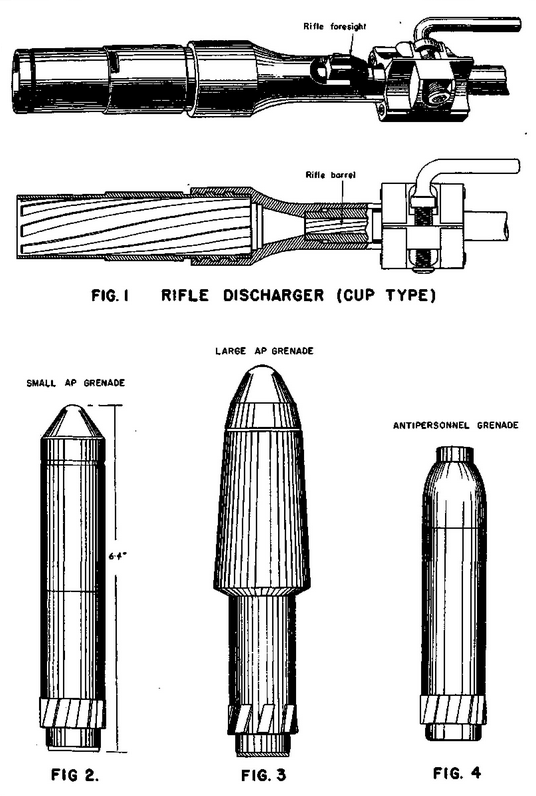Gewehr-Panzergranate on:
[Wikipedia]
[Google]
[Amazon]
The Gewehr-Panzergranate was a
 The Gewehr-Panzergranate was launched from a Gewehrgranatengerät or Schiessbecher ("shooting cup") on a standard service rifle by a
The Gewehr-Panzergranate was launched from a Gewehrgranatengerät or Schiessbecher ("shooting cup") on a standard service rifle by a
shaped charge
A shaped charge is an explosive charge shaped to form an explosively formed penetrator (EFP) to focus the effect of the explosive's energy. Different types of shaped charges are used for various purposes such as cutting and forming metal, ini ...
rifle grenade
A rifle grenade is a grenade that uses a rifle-based launcher to permit a longer effective range than would be possible if the grenade were thrown by hand.
The practice of projecting grenades with rifle-mounted launchers was first widely used dur ...
that was developed by Germany
Germany,, officially the Federal Republic of Germany, is a country in Central Europe. It is the second most populous country in Europe after Russia, and the most populous member state of the European Union. Germany is situated betwee ...
and used by the Wehrmacht
The ''Wehrmacht'' (, ) were the unified armed forces of Nazi Germany from 1935 to 1945. It consisted of the ''Heer'' (army), the '' Kriegsmarine'' (navy) and the ''Luftwaffe'' (air force). The designation "''Wehrmacht''" replaced the previo ...
during World War II
World War II or the Second World War, often abbreviated as WWII or WW2, was a world war that lasted from 1939 to 1945. It involved the World War II by country, vast majority of the world's countries—including all of the great power ...
.
Design
 The Gewehr-Panzergranate was launched from a Gewehrgranatengerät or Schiessbecher ("shooting cup") on a standard service rifle by a
The Gewehr-Panzergranate was launched from a Gewehrgranatengerät or Schiessbecher ("shooting cup") on a standard service rifle by a blank cartridge
A blank is a firearm cartridge that, when fired, does not shoot a projectile like a bullet or pellet, but generates a muzzle flash and an explosive sound ( muzzle report) like a normal gunshot would. Firearms may need to be modified to allow a b ...
. The primary components were a nose cap, internal steel cone, steel upper body, aluminum lower body, rifled driving band, TNT
Trinitrotoluene (), more commonly known as TNT, more specifically 2,4,6-trinitrotoluene, and by its preferred IUPAC name 2-methyl-1,3,5-trinitrobenzene, is a chemical compound with the formula C6H2(NO2)3CH3. TNT is occasionally used as a reagen ...
filling, and a PETN base fuze.
The Gewehr-Panzergranate was an anti-armor
Anti-tank warfare originated from the need to develop technology and tactics to destroy tanks during World War I. Since the Triple Entente deployed the first tanks in 1916, the German Empire developed the first anti-tank weapons. The first deve ...
weapon which upon hitting the target ignited the PETN base fuze which in turn ignited the TNT filling which collapsed the internal steel cone to create a superplastic high-velocity jet to punch through enemy armor. Since shaped charge weapons rely on chemical energy to penetrate enemy armor the low velocity of the grenade did not adversely affect penetration. A downside of the Gewehr-Panzergranate was its short range .
References
{{WWIIGermanInfWeapons Grenades of Germany Rifle grenades World War II weapons of Germany